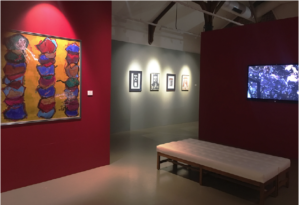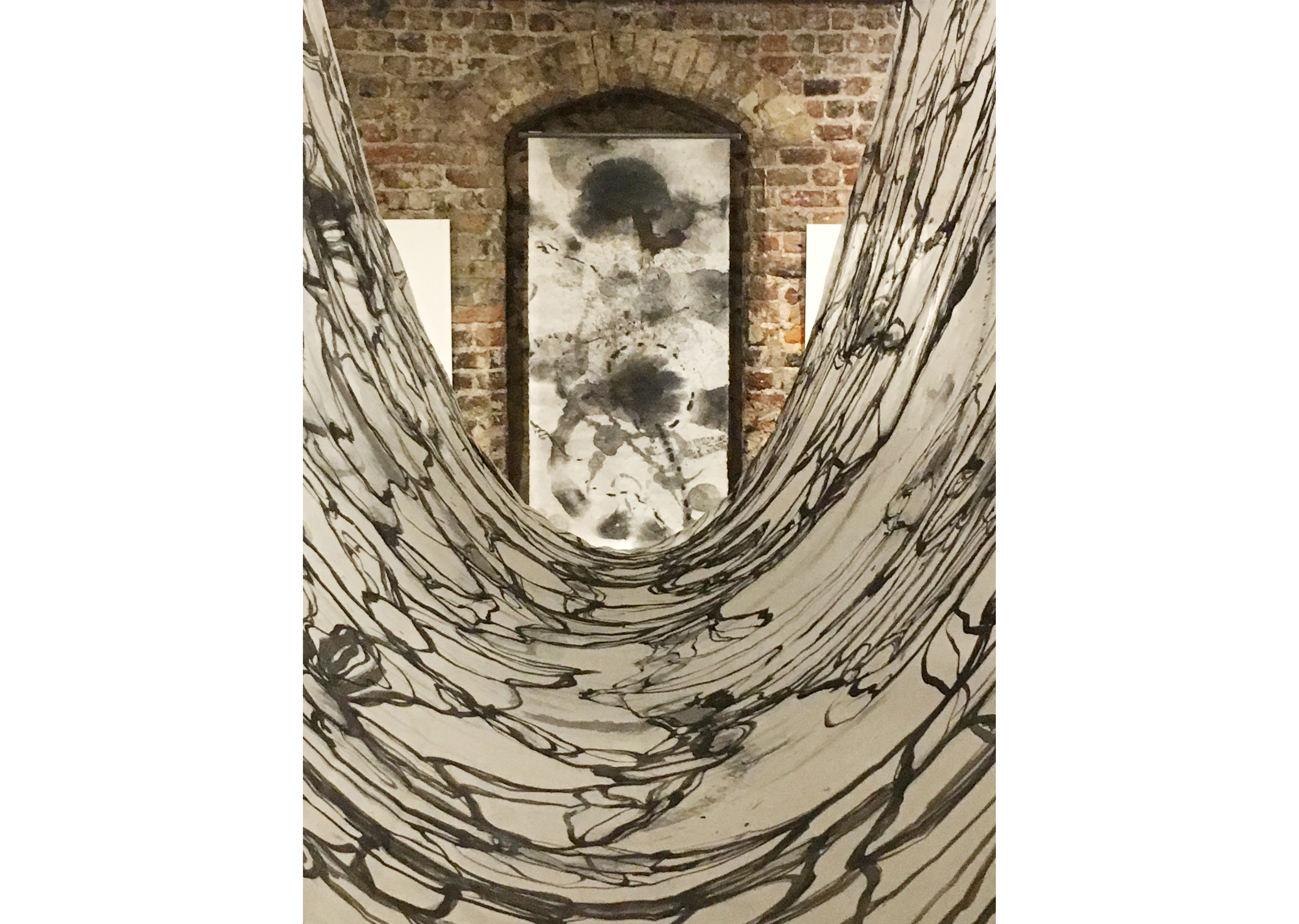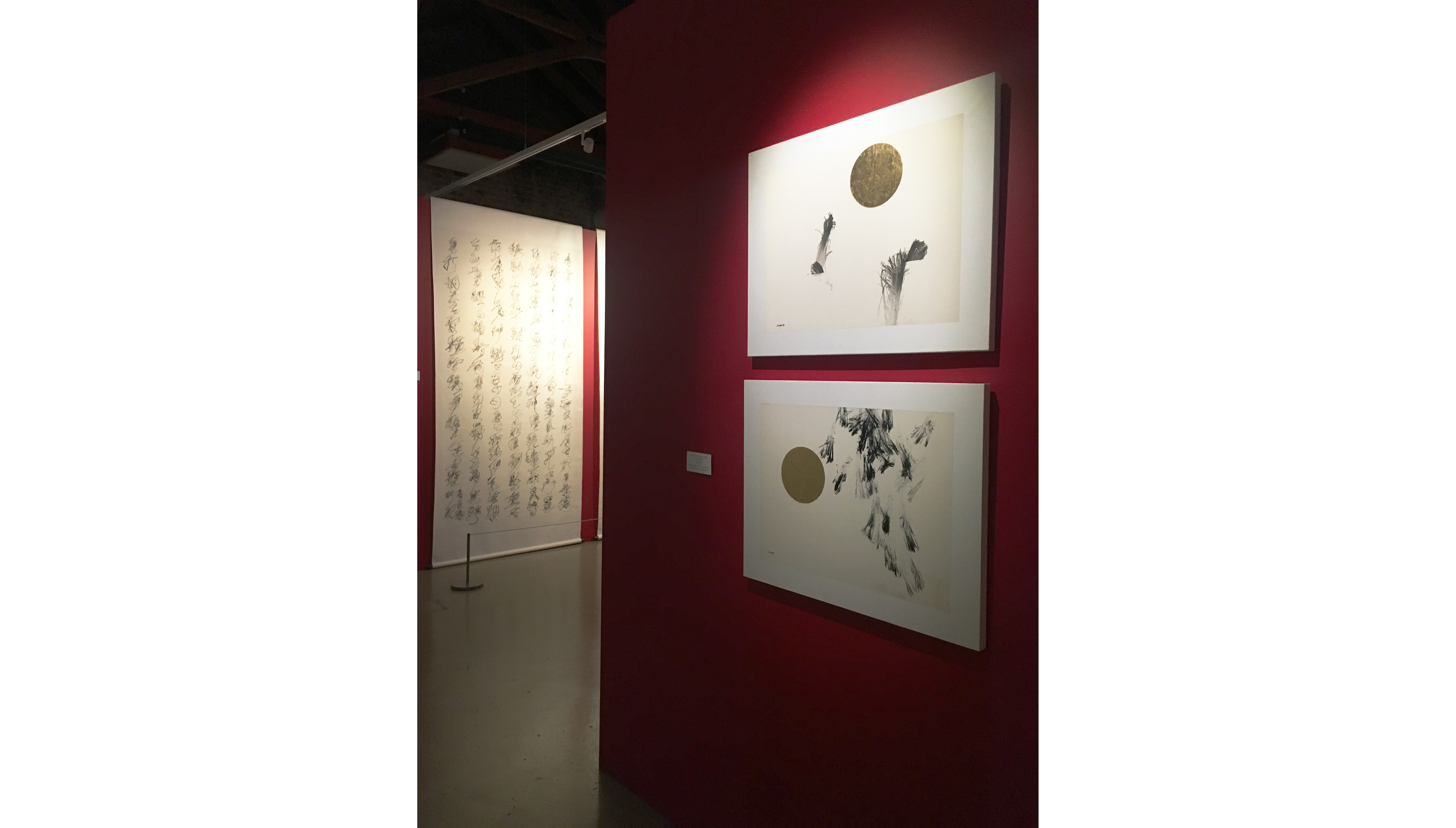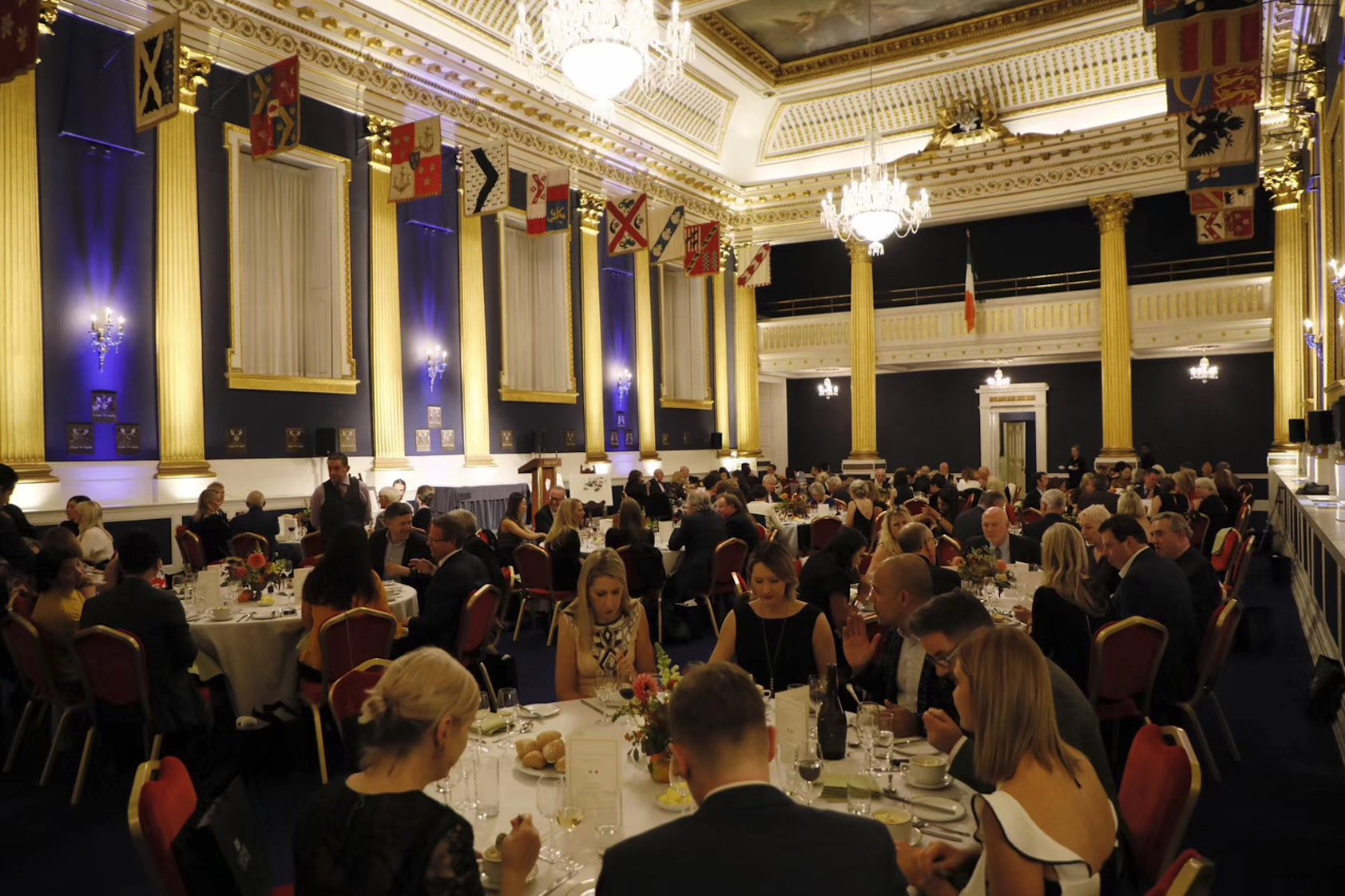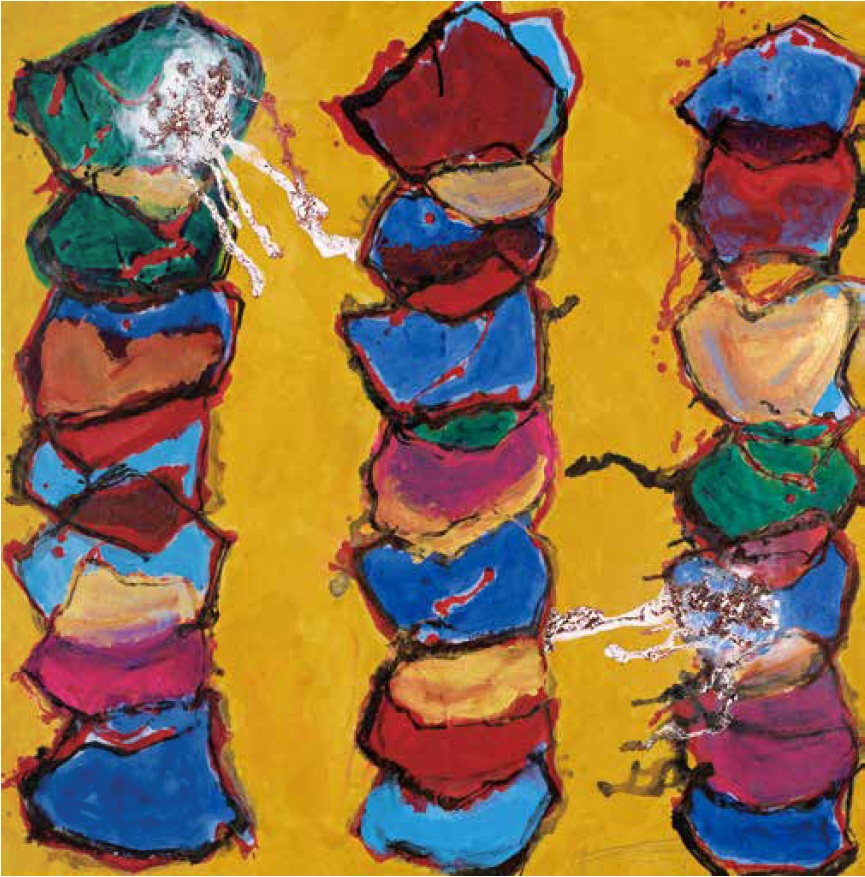'BEYOND THE THREE PERFECTIONS' AT DUBLE CASTLE
It is close to three years since I had the honour of introducing the Director of The National Art Museum of China, Professor Wu Weishan, to President Michael D. Higgins of Ireland at the Irish embassy in Beijing, on the occasion of the President’s immensely popular State visit to China in the December of 2014. At the time, Wu Weishan presented President Higgins with a bronze sculptural depiction of Laozi. As Professor Wu introduced his work, he explained the aperture at the heart of the figure – intended to convey a central tenet espoused by the legendary founding philosopher of Daoism:- in being “empty,” Laozi demonstrates what it is to be “full”. In other words, without desire, a person of the dao or “Way” is able to re-discover the riches of a natural, unforced state of being.
I recall the genuine interest with which President Higgins and his wife Sabina listened intently to Wu’s words. The impression was clearly reciprocated. For his part, Professor Wu reflected to me some months later at his museum in Beijing’s Gaobeidian: “I am very fortunate to meet a number of Presidents in my position, but I have never met a President who is a poet”. Following this happy encounter, it seemed a natural progression to create an exhibition to honour it. Thus Beyond the Three Perfections was born and I am proud to see it realised at Dublin Castle’s exhibition space and to celebrate Sino-Irish relations with a gathering supported by the Commissioners of The Office of Public Works in Ireland at the State Apartments of historic Dublin Castle.
The “Three Perfections” as they are known – poetry, painting and calligraphy – have a long and uninterrupted history of cultivation in China. The tradition of uniting them in a single art work captured the collective imagination during what was arguably the most culturally brilliant era in imperial Chinese history, the Song dynasty (960 – 1279 AD). A time of great social and economic transformation, the Song shaped and acted as a reference point to the intellectual climates of China right up to the 20th century. The inception of the Three Perfections can be traced to the eminent poets Li Bai and Du Fu who first instigated the inclusion of poetry into painting in the preceding Tang dynasty (618 – 907 AD). The practice was cemented in the successive Song when the prolific poet, painter, calligrapher and theorist of the arts, Su Shi, developed the custom though his own popular oeuvre. The imperial court system then ensured the anchoring of poetry, painting and calligraphy within the education system through the syllabus of The Imperial Painting Academy. Painting, poetry and most especially calligraphy, were the expected observance of the student of self-cultivation. Notably, in the context of this exhibition, to be a Prime Minister in ancient China, it was requisite that one also be an accomplished poet.
As a result of the converged art forms, the expression “The Three Perfections” emerged – what came to be known as the “soundless poem” to describe how one might experience poetry through painting. Or, as Patty Hudak, one of the artists of this exhibition, reminded me in the course of our conversations: “Painting is poetry that is seen rather than felt. Poetry is painting that is felt rather than seen.” (Da Vinci) And of course there is a dovetailing of the two concepts in Rosc, the Gaelic word for ‘poetry of vision’ and the same name of the exhibitions curated in Ireland by James Johnson Sweeney starting in 1967 to promote cultural understanding during the Cold War. It is the concept of convergence that was the incentive behind this exhibition, not as a unified work of art but as cross-pollination of ideas across culture and genre. Whether looking at the artistic evolution that arose from Patrick Scott’s early discovery of Zen philosophy in the mid-1950’s in Ireland or Patty Hudak’s ink and wash paintings inspired by President Higgins’ poetry created on her journey through Asia today; whether Wu Weishan’s life-long desire to capture the fortitude and convictions of some of the most resilient figures, both Chinese and Western, in Chinese history through secular sculpture, an art form less than one hundred years in existence in China; or Wei Ligang’s own journey to reformulate the most ancient calligraphic scripts shaped by his background in pure mathematics to achieve a singular form of abstraction, this exhibition is concerned with the convergence not only of art forms, but of ideas – a modest approach to threading the famous East-West Kipling ‘twain’.
Possibly the idea that requires the greatest attention of our time is one that is lofty yet at the same time foundational to all of our futures: that of cross-cultural understanding. We trade in the minutia of a supply chained-world more than ever and yet the fundamental distinctions of a foreign culture remain enigma. Consideration can only come about through open-minded exchange and the Arts will forever be an easy gate of access. The artists of this exhibition
have each dedicated significant self-application to understanding the cultural ‘other’. And, on looking through the final selection of works on display, I have been struck by their collective openness and relinquishing of ego that culminates, I believe, in genuine osmosis. These are, equally, attitudes to life that I encounter on a daily basis in the years I have been coming to China. More than this, the confident recognition of tradition with an adaptability and willingness to try new things has always made a deep impression – and nowhere more visible than in art academies across China today. While calligraphy and guo hua or landscape ink painting are still rigorously taught, just as they were in the academies of the Song dynasty one millennium ago, the aim of this exhibition is also to recognise one of the greatest areas of artistic exchange between East and West – sculpture. In recent years China has seen some of its most popular exhibitions are in sculpture, from Giacometti to Kaws, however sculpture as a secular pursuit was only introduced to China in the early 20th century and was only first introduced into the Chinese education system at the Hangzhou Art Academy less than a century ago. We explore this through the gift of Professor Wu Weishan, Director of the National Art Museum of China, to the State of Ireland and in his further sculptural works illustrated in this catalogue.
From Beijing to Dublin, and in the cultural bridge from poetry, painting, calligraphy and on to sculpture, we see the opportunity for future rich artistic exchanges between China and Ireland. The metaphor and form of the circle favoured in the imagery of both Patrick Scott and Wei Ligang is fitting symbolism for an exhibition conceived to evolve cultural links in its own, humble way. In discussion with all of the artists in this exhibition, and I dare say the same was true for the late, great Patrick Scott, their search for the ‘other’ has ultimately lead to greater self-realisation. This may be the cornerstone of Daosim, and of Zen, but it is also an enlightened philosophy for modern global reality.
– Emily de Wolfe Pettit
